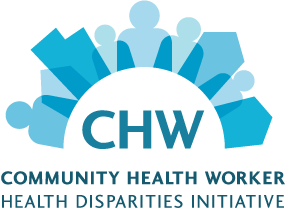1.3 Decide Who to Reach

In this Section
Who do you plan to reach through your heart health program?
When you know who you are serving, you can make sure your program meets their needs to improve their health. This helps to make your program successful. It also keeps people coming session after session.
You also need to define who you want to reach so that you can explain this to your organization’s leaders, community partners, and funders.
Walk through these steps to decide who you are trying to reach and what they might need:
- Find out details about the people who might join your program
- Know where to find the people who might join your program
- Know where to meet with the people in your program
- Know what might make it hard for people to be a part of your program
- Find out when people can come to your program
- Figure out the best way to offer your program
Helpful Handouts and Tools
Heart Health Program Interest Survey  (PDF, 188 KB)
(PDF, 188 KB)
Find Out Details About the People Who Might Join Your Program
It is good to know certain information about the people you plan to recruit so you can fit your program around them. To do this, start by talking with partners and other service providers. Also, review needs assessments, if they are available. These are reports that help you to see what people in a community have described as their health needs. Check to see if your own organization has done needs assessments in the past. If not, check with your partners.
Find out information like their
- Cultural background,
- Racial or ethnic group,
- Age group,
- Main language of choice, and
- Literacy level.
Also learn about the following:
- Health choices. Ask yourself, “What things do the people who might join our program do or do not do that affect their heart health?” Base your program on what people are already doing to improve their health. In this way you encourage their strengths while helping them with their heart health challenges.
- Needs. Ask yourself, “Why would they want to learn about heart health?” Is it because they have certain health needs or concerns they want to address? Are they community health workers (CHWs) who want to build skills so they can train others?
- Barriers. Ask yourself, “What may make it hard for them to be a part of our program?” Can people not come because they do not have child care or transportation? Do they work long hours and not have time to eat dinner before coming?
- Preferred learning style. Ask yourself, “What are the best ways to teach people in our program so they learn the most?” Learn more in Plan Your Sessions under Help Adult Learners Learn.
- Preferred ways to communicate. Ask yourself, “What is the best way for me to reach people?” Is it best to call? Send a text message? Meet them somewhere in the community?
If you are not sure how to answer the questions above, you can
- Ask the people you want to join your program,
- Talk with other trainers and service providers who also work with the same community, and
- Review surveys that were filled out by the people you want to reach. Check out our Heart Health Program Interest Survey
 (PDF, 188 KB) if you want to do surveys. Check with your leaders before doing this.
(PDF, 188 KB) if you want to do surveys. Check with your leaders before doing this.
Know Where to Find the People Who Might Join Your Program
Think about where people live, work, play, and access community resources (e.g., clinics, libraries, schools). See Recruit for more information.
Know Where to Meet with the People in Your Program
What meeting place is easy for them to reach? Think about where they live, work, play, and access community resources (e.g., clinics, libraries, schools). Ask them where it would be best to meet. Choose a place that is easy for people to get to by walking, wheelchair, bus, subway, or car.
Know What Might Make It Hard For People to Be a Part of Your Program
People may be interested in your program but not attend because of certain barriers, such as the following:
- Place. Are you offering your program at a place that people can easily find and reach? If you meet at night, will people feel safe arriving and leaving?
- Transportation. How will people get to your program? You may need to provide information on public transportation or choose a meeting place that is easy to walk to. Also, see if people in your program want to organize ride sharing.
- Language. Make sure you provide heart health information in their main language. Our materials are available in English and Spanish. We also have handouts in Tagalog for Filipinos.
- Child care. Do the people in your program need child care to be able to attend? Will you offer child care at your meeting place?
- Schedules not matching up. Even when you try to set up a schedule that works for everyone you recruit, it will never be perfect. Besides, people’s schedules change.
- Not feeling confident. Some adults have not participated in education sessions in many years and may find it scary to take one now.
- Comfort level discussing health matters. People may not feel comfortable discussing health matters with strangers.
- Money problems. Even if you are offering your program for free, the people in your program may not have the money for gas or a bus fare to get there, or they may need to work a number of jobs to support their families.
- Personal problems. Different things come up in people’s lives at different times that can take priority over your program.
- Health. People may stop coming for a time or altogether if they are sick or taking care of someone who is sick.
- Disliking your organization, yourself, or your team. Someone in your program, for example, may have had a bad experience with someone you work with, and therefore may not want to return.
- Family or others not supportive. While the people in your program may be excited to go, others in their lives may prefer that they stay home.
Deal with these challenges by learning how to Handle Barriers.
Find Out When People Can Come to Your Program
When you learn more about the people you are recruiting, you will get a sense of when they can come to your program. For example, if you plan to work with young parents, you will not want to offer a program in the afternoon because that is the time their kids leave school.
Figure Out the Best Way to Offer Your Program
Based on what you now know about the people who might join your program, answer the following questions:
- Should you meet on several occasions or just once?
- If you should meet just once, what day, time, and place will work best?
- If you should meet on several occasions, then answer the following:
- How often should you meet and on what days (e.g., every Thursday morning)?
- Over what period should you meet (e.g., 1 month)?
- How long should each session last (e.g., 2 hours)?








